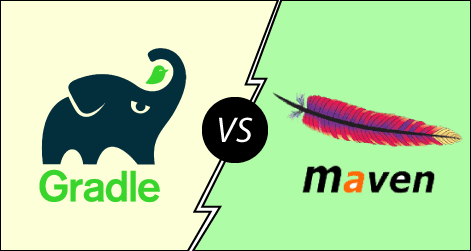Gradle vs. MavenGradle is one of the several build tools available for Java, but it's not the only build automation tool to consider. Maven is an older and generally used alternative, but which build system is best for our project with other Java frameworks, such as Spring, Hibernate. It is tough to decide which tool is better to use when both tools are coupled with an increasing number of integrations. Let's discuss both tools to understand which tool is better according to our needs. Gradle is a build automation tool that is an open-source and builds based on the concepts of Apache Maven and Apache Ant. It is capable of building almost any type of software. It is designed for the multi-project build, which can be quite large. It introduces a Java and Groovy-based DSL (Domain Specific Language) instead of XML (Extensible Markup Language) for declaring the project configuration. It uses a DAG (Directed Acyclic Graph) to define the order of executing the task. Gradle offers an elastic model that can help the development lifecycle from compiling and packaging code for web and mobile applications. Gradle provides support for the building, testing, and deploying software on different platforms. It has been developed for building automation on many languages and platforms, including Java, Scala, Android, C / C ++, and Groovy. It is the official build tool for Android. Gradle provides integration with several development tools and servers, including Eclipse, IntelliJ, Jenkins, and Android Studio. Some significant benefits of Gradle are as following:

Maven is an open-source software project management tool that is primarily used for Java projects. It can also be used for other programming projects such as C#, Ruby, Scala, and more. The Apache software foundation manages maven projects. Maven addresses the two main aspects of software development; dependency, and how software is built. In maven, An XML file describes the building process of a project, its dependencies, components, and other external modules. There are predefined targets for tasks like packaging and compiling. Note: Gradle is built to overcome the drawbacks of Maven.The structure of the project can be created automatically in a short duration as Maven uses the standard directory layout and a default build lifecycle that helps to build a project in a concise duration. When there are multiple development teams, Maven can operate in a standard format over a short duration. Some significant benefits of Maven are as following:
Gradle vs. MavenLet's discuss some key differences between Gradle and Maven:
Next TopicGradle vs Ant
|
 For Videos Join Our Youtube Channel: Join Now
For Videos Join Our Youtube Channel: Join Now
Feedback
- Send your Feedback to [email protected]
Help Others, Please Share










